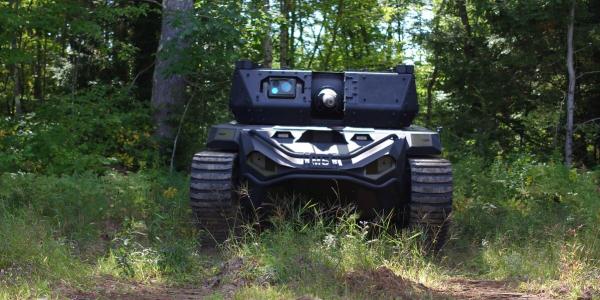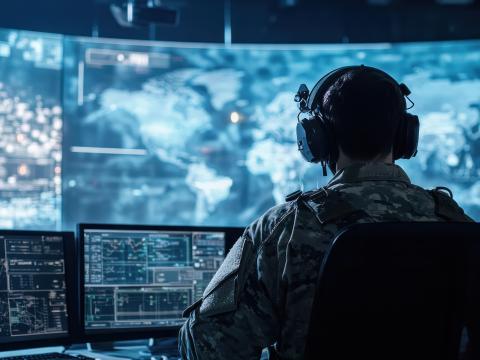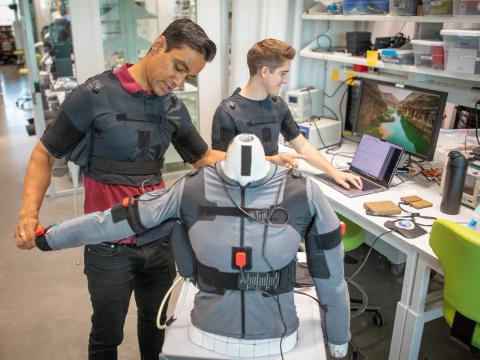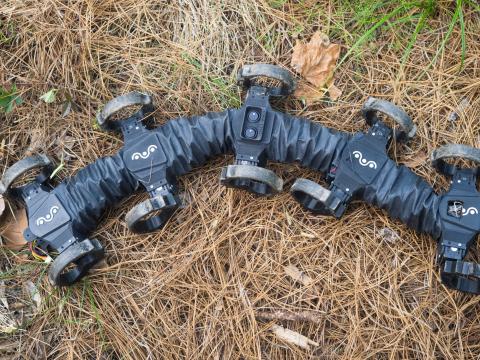Manned-Unmanned Teaming Passes Experimental Muster
Manned-unmanned teaming technologies being assessed in a weeks-long experiment are receiving mostly positive reviews from Army officials and non-commissioned officers.
The Next Generation Combat Vehicle Cross-Functional Team and Combat Capabilities Development Command’s Ground Vehicle Systems Center are conducting soldier operational experiments at Ft. Carson, Colorado, from June 15 through August 14. The goal is to observe, collect and analyze feedback from soldiers to assess the feasibility of integrating unmanned vehicles into ground combat formations.
This is the first in a series of soldier experiments the Army is conducting to assess whether robotic combat vehicles will increase the lethality of ground combat units. For this initial experiment, the Army is equipping a platoon-sized element of 4th Infantry Division soldiers with so-called Mission Enabling Technologies Demonstrators (MET-D).
The MET-Ds include modified Bradley Fighting Vehicles and modified M113 tracked armored personnel carriers. The vehicles have been retrofitted with robotics technologies so that they can act as surrogates for the Army’s Next-Generation Combat Vehicles and the accompanying robotic vehicles. The manned-unmanned teaming concept involves a human crew inside of one vehicle controlling a robotic vehicle, each communicating with the other.
The Robotic Combat Vehicles program aims to develop a suite of vehicles that can be remotely operated to do two things: provide additional time and space for leaders to make decisions by providing additional reconnaissance capabilities and standoff distance; or to replace soldiers in high-risk activities, including combined arms breaches or chemical, biological, radiological, nuclear and explosives reconnaissance.
Army officials, researchers and non-commissioned officers discussed the preliminary lessons learned from the first experiment in an August 6 virtual round table discussion with reporters.
Brig. Gen. Richard “Ross” Coffman, director, Next-Generation Combat Vehicle Cross Functional Team, declared the first experiment 100 percent successful because officials learned from it. “All of the technology was not successful. Some knocked our socks off, and some we’ve got a little bit of work to do,” Gen. Coffman said. “That technology, as it is today, could add a lot of benefit on the battlefield.”
The general noted that the Army has used robots for a long time and laid out a vision of robotic systems performing a wide range of missions, including sensing, shooting, detecting chemicals, providing smoke cover, breaching obstacles and conducting route reconnaissance.
Gen. Coffman described one of the artificial intelligence-enabled target recognition systems included in the experiment as a “a leap-ahead” capability “trained on synthetic data.”
Situational awareness software also performed mostly well. “The interface with the crew, the map interface so that the soldiers see where they are, they see where the robots are, they can communicate graphics, it just absolutely blew us away. Really, really good piece of kit,” the general reported.
But soldiers indicated in their feedback that they need a better sense of what’s going on around the remote vehicle. For example, if the robot is sitting at an observation post, the soldiers in the control vehicle need to hear noises the vehicle itself might be making that enemy forces could detect.
Additionally, the controllers need greater awareness of the terrain the robotic vehicles are navigating. Soldiers driving a Humvee know when it is getting bogged down in sand or traversing a steep incline that might result in a rollover, but that is not true of soldiers controlling a remote vehicle. “For me, the ability to see downward once we approach certain inclines and declines would probably be an astute upgrade that would push us forward in the right direction,” said Sgt. Matthew Morris, 4-10 Cavalry, 3rd Brigade Combat Team, 4th Infantry Division.
Gen. Coffman also praised the 50-caliber machine gun the Army developed specifically for the robotic vehicle. “It’s not perfect yet, but our armaments center has developed a weapon specifically for the robots, so you can’t just walk up and take off the 50-cal and turn it on the friendlies. These are electronically actuated weapons that can clear [their] own jam,” he said. “What we found out here is that they work. They do what they say. But when you’re bouncing around on terrains, we have a little bit of work to do in this area.”
Army officials acknowledged that the autonomous capabilities are not yet where they want them to be. But Jeffrey Langhout, director, Combat Capabilities Development Command, Ground Vehicle Systems Center, pointed out that the Army vehicles operate in much tougher terrain than commercial smart cars.
“It’s a true statement that right now we don’t have sensors that can tell us whether we’re coming across a little puddle that we can drive through or whether that puddle’s eight feet deep and going to bog us down forever,” Langhout said. “All those cars we’re seeing up and down the road are operating in generous GPS environments with big white lines on the roads, and everything is really good. We’re off the road and things get dramatically difficult quite quickly.”
Despite challenges, the autonomous technologies are chalking up some successes, officials suggest. “We put a way point out there for it, and the robot can navigate its own way to get to that point. It relies on the sensors to keep from driving into ditches and all kinds of problems,” Langhout reports.
Gen. Coffman adds that earlier this year in Europe, an autonomous Army vehicle was able to deliver a logistics package to a command post three kilometers away without human interference.
The line-of-sight communications link between the vehicles limits how far apart they can operate from one another. But Army officials believe they will be able to extend that distance with advanced waveforms or tethered unmanned aerial vehicles acting as communications relays.
“The distance between the robot and the controller is a physics problem. When you talk flat earth, you can go over a kilometer from the controller to the robot. That’s not an American problem. That’s a physics problem, so each of our potential adversaries has the same deal,” Gen. Coffman stated. “What’s really encouraging, though, is that there are companies that have created waveforms to get us to the megabytes per second required to extend that range in dense, forested lands. That’s really the hardest part. If you get into a dense forest, it’s really difficult to extend the range.”
The next experiment is expected to include a tethered unmanned aerial vehicle. “We’ve added tethered UAVs in phase two that will extend the line of sight. So, we’re pushing the envelope here. But you’re looking at, on a good day with all of that technology, working probably 1500 to 2,000 (meters) apart,” the general said. “We’ve got to test it. We’ve got to experiment with it. We’ve got to confirm it.”
And while the distance may not sound great, it should be a good fit for current Army operations. “At first, that seemed like a short distance to me—800 meters, 1000, 2000 (meters)—but if you think about how we fight, platoons within a company are generally not spread out over five kilometers. They’re a little tighter. If you could extend the battlefield up to two kilometers with a robot, then that means you can make decisions before your enemy can,” Gen. Coffman offered.
And those distances could grow greater in the future. “As we try to bend physics, if we could increase the distance between the robot and the control vehicle … I think that is absolutely something that could be done in the future with non-line-of-sight systems,” Gen. Coffman suggested.
The general stressed that it’s the benefits the technology provides for the warfighters that is most important. “For me, this isn’t about robots. This isn’t about technology. This is about soldiers. And this is about commanders on the battlefield and giving them more decision space and reducing the risk on our men and women when we go into the nastiest places on Earth. These robots are going to do that in the future.”





Comments